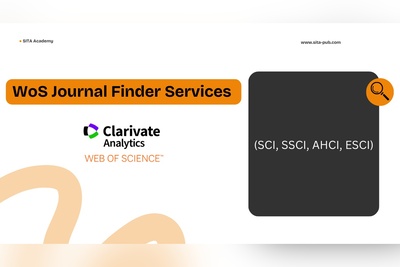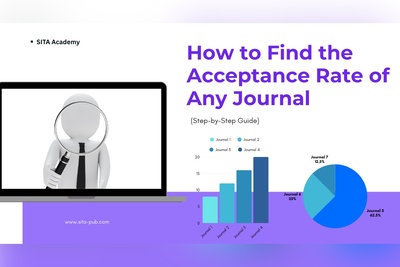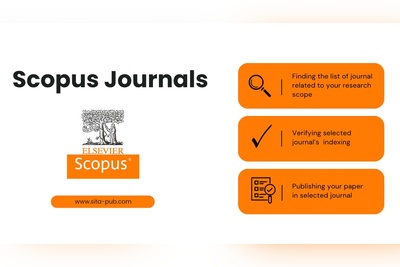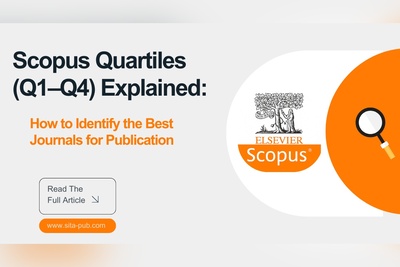Medical Paper Publication Guide: Tips for Scopus-Indexed Journals
Discover how to publish medical research in Scopus-indexed journals. Learn how to select the right journal, check quartile rankings, understand publication timelines and fees, verify journal credibility, and prepare your manuscript for submission.

Publishing research in reputable medical journals is a crucial step for researchers, clinicians, and academics worldwide. After completing your manuscript, the next challenge is selecting a Scopus-indexed journal that matches your research scope, offers a high acceptance rate, and provides a transparent publication timeline.
Many researchers wonder how to identify the right journals, evaluate impact metrics, and ensure credibility. In this guide, we will answer common questions researchers have when their medical paper is ready for publication, explain how to evaluate journals.
How to Find Scopus Journals for Medical Papers
After completing a manuscript, researchers often search:
“How to find Scopus journals that publish medical papers”
“Best Scopus journals in medicine”
“Scopus journals for pharmacy/clinical research”
Practical Steps to Identify Suitable Journals
Use Scopus Journal Finder Tools
Elsevier’s Journal Finder allows you to enter your manuscript title and abstract to generate a list of potential Scopus journals that match your scope.
Check Scopus Lists
Scopus maintains an official list of indexed journals, where you can filter by subject area such as medicine, pharmacy, clinical trials, surgery, cardiology, oncology, nursing, or public health.
Review Journal Scope and Aims
Carefully read each journal’s scope to ensure alignment with your research topic. Submitting to a mismatched journal reduces acceptance chances.
Look at Previous Publications
Examine recently published articles to see if similar research is accepted and the quality standard of the journal.
Professional Publication Support Services
If you want to save time and increase acceptance chances, working with professional support services like SITA Academy is highly beneficial. These services analyze your paper—including title, abstract, and research scope—to recommend Scopus journals that are the best fit for your work.
Journal Recommendation Based on Your Paper: Experts review your manuscript and match it with journals aligned with your research area.
Fields Covered: Medicine, pharmacy, clinical research, surgery, cardiology, oncology, nursing, public health, and more.
Evaluate Scope and Fit: Ensures submission only to journals with high relevance.
Review Journal Metrics: Includes quartile ranking, impact factor, and estimated publication timeline.
Checking the Quartile Ranking of Scopus Journals
Researchers often ask:
“How to check the quartile ranking of Scopus journals?”
“Which medical journals are Q1 or Q2 in Scopus?”
Understanding Quartiles
Scopus journals are ranked into quartiles (Q1–Q4) based on CiteScore metrics:
Quartile | Meaning |
Q1 | Top 25% journals – high visibility and impact |
Q2 | Top 25–50% – moderate visibility, reputable |
Q3 | Top 50–75% – niche or emerging journals |
Q4 | Bottom 25% – low visibility, less competitive |
How to Check
Use Scopus Sources: Search the journal title → check its subject area and quartile ranking.
Review CiteScore and SNIP: High scores indicate strong impact.
Understanding Acceptance and Publication Timeline
Common queries include:
“What is the typical acceptance and publication timeline for medical journals?”
“How long does it take to publish in Scopus journals?”
Practical Guidance
Check Journal Information: Most journals provide approximate timelines for peer review, revisions, and publication.
Factors Affecting Timeline: Complexity of research, reviewer availability, journal review process, and revision rounds.
Typical Duration
Initial review: 2–8 weeks
Revision process: 2–6 weeks
Final acceptance to online publication: 2–4 weeks
Print publication: 1–3 months
Tip: Journals with faster timelines may have higher publication fees or stricter formatting requirements.
Understanding Journal Fees and Article Processing Charges (APCs)
Researchers ask:
“What are the fees for publishing in Scopus journals?”
“How much is the APC for medical journals?”
Key Points
Open Access Journals: Usually charge APCs ranging from $500 to $5000 depending on impact and scope.
Subscription-Based Journals: May have no APC for accepted articles but optional open access may be available.
Always verify fees on the official journal website.

Ensuring Journal Credibility and Indexing
Critical questions include:
“How to ensure the journal is credible and truly indexed in Scopus?”
Checklist to Verify Credibility
Check Scopus Official Index: Ensure the journal is listed on the Scopus Source List.
Publisher Reputation: Established publishers like Elsevier, Springer, Wiley, and Taylor & Francis maintain strict indexing.
Peer Review Transparency: Legitimate journals clearly outline their review process.
Avoid Predatory Journals: Be cautious of journals promising fast publication with hidden fees.

Publishing Your Medical Paper with SITA Academy
Navigating the Scopus publication process can be challenging. SITA Academy offers end-to-end support to maximize acceptance chances.

Our Services Include:
Journal Recommendation:
Suggest Scopus journals across medical fields such as medicine, pharmacy, clinical research, surgery, cardiology, oncology, nursing, public health, and more.
Formatting Your Paper:
Ensure your manuscript meets the journal’s specific guidelines, including references, tables, figures, and style.
Submission Assistance:
Handle all required materials and communicate with the journal until acceptance.
Additional Services:
Native English Editing for clarity and readability
Plagiarism Checking and Removal
Professional Cover Letter Writing
Benefits of Using SITA Academy
Save time identifying suitable journals
Increase acceptance chances by targeting journals that match your research scope
Ensure submission meets all technical and editorial requirements
Receive guidance on fees, quartiles, and publication timelines
Practical Tips for Researchers
Checklist for a Smooth Publication:
Choose journals aligned with your research scope.
Verify indexing and credibility before submission.
Check quartile ranking and impact metrics.
Review past publications for relevance.
Consider open access for wider reach.
Use professional support to handle formatting, submission, and communication.
Process of Submitting an Order in SITA Academy

Share Your Research Scope |

Receive Journal List |

Select Your Journal |

Formatting & Submission |








